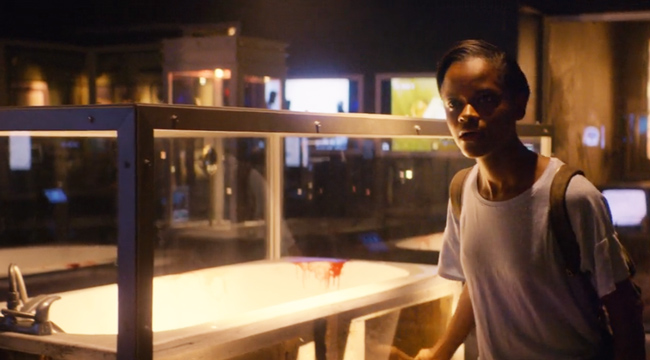
*This article contains spoilers across all Black Mirror seasons and episodes*
Do all the episodes in Black Mirror take place in the same universe? Each installment of the wildly popular (and often controversial) Netflix series is its own self-contained cautionary tale of future tech. But fans of the series have noticed several recurring references that seem to imply most if not all Black Mirror stories are taking place in the same world.
Show creator and head writer Charlie Brooker has even changed his stance on the subject. Originally he said each episode took place in its own reality, and season one of Black Mirror featured no links between any of the first three episodes. But that slowly changed with season 2 dropping a few subtle winks at the possibility of a shared universe during “The Waldo Moment.” The innocuous headline “Geraint Fitch cleared of wrongdoing following paparazzi scuffle” from “The National Anthem” reappears during a news broadcast, seemingly tying the start of the two episodes together timeline-wise. And then Abi from “Fifteen Million Merits” shows up on a billboard in the dying moments of the episode after Waldo has seemingly taken over large parts of the government.
From there it only goes deeper. The repeated reuse of Abi’s song “Anyone Who Knows What Love Is” in multiple episodes was done to “nest the whole thing together in some kind of artistic universe, to sound wanky for a moment,” according to Brooker. The floodgates opened in season three with dozens of references to past seasons and other episodes in that run. “It’s probably all in the same psychological universe,” Brooker admitted in a Reddit IamA at the time of release.
But season four’s finale “Black Museum” puts the debate to rest: it tells the tale of a curator who has collected pieces of dark human history, amongst them many items from past Black Mirror episodes. Of course, we imagine the Black Mirror writing team reserves the right to follow or discard as much of the history and tech built up by past episodes as they desire, but in season four they’ve actively littered the background with even more breadcrumbs that tie the stories together into one disturbing reality.
Here are all the references picked up from season four of Black Mirror so far by eagle-eyed viewers across the internet.
“U.S.S. Callister“
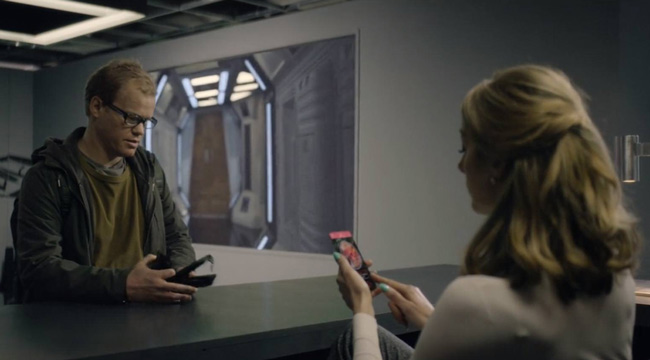
At the start of the episode, Callister Inc. secretary (and unwitting U.S.S. Callister crew member) Elena can be seen using the same dating app featured in “Hang The DJ” and the season 3 episode “Playtest.” There’s an interesting moral question raised by this: there’s basically no difference between the simulated crew members of the U.S.S. Callister and the simulated folks looking for love in “Hang The DJ.” At least the dating app wasn’t purposefully torturing its simulated beings, although you could argue the way it searched for love could be seen as its own form of torture.
The disturbing takeaway: simulated realities are so common that someone with ‘Captain’ Daly’s resources was able to afford all the gear he needed to replicate people in his fantasy world and do whatever he wanted with them. The level of empathy the world holds for these simulated people seems low to non-existent, to the point where people using the dating app in “Hang The DJ” willingly allow copies of themselves to be created and run through a gauntlet of dating scenarios. But maybe we’re being bleeding heart fools here, tricked by a TV show into sympathizing with mere data.
And if you didn’t already know Captain Daly was a creep, he also seems to have named two of the planets in his Space Fleet world after the murderers from “White Bear.” Skillane IV and Rannoch B refer to Victoria Skillane and Iain Rannoch, who tortured and killed young Jemima Sykes in the season 2 episode. There’s also a small nod back to season 3’s “Men Against Fire” episode. The brand of milk Daly drinks throughout the episode is Raiman milk. “Men Against Fire” features a soldier named Raiman who says her family owns a farm.
“Arkangel”
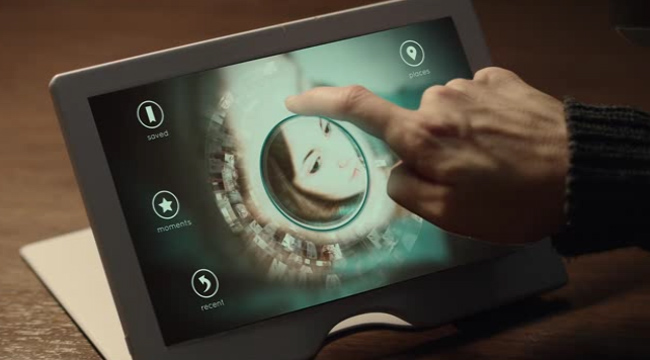
The biggest connection in this episode is in how memories stored by the Arkangel tablet appear in a circle, the same way they do in “The Entire History of You.” While Arkangel ends up being banned (and rightfully so, a small victory for the morality of the Black Mirror world), the circle of memories is carried forward and integrated into the Willow “grain” technology people use to record everything they see.
The parental filter technology also works like a basic version of the MASS interface used by the army in “Men Against Fire,” and interestingly enough the footage young Sara watches as they install Arkangel and test it out is pulled from that episode.
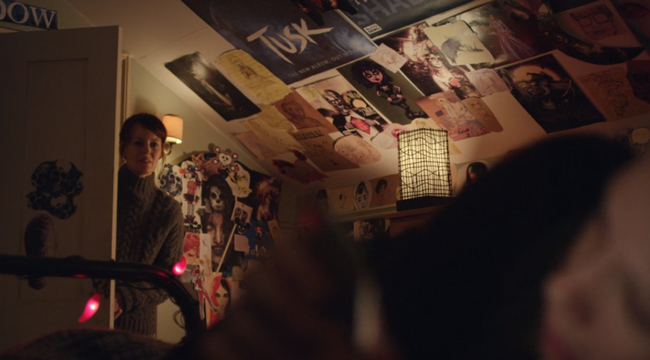
Teen Sara’s bedroom posters also link the episode further into Black Mirror mythology. There’s a poster for Tusk, the singer who becomes the second drone bee victim in “Hated In The Nation,” and another poster for the Harlech Shadow game from “Playtest.”
“Crocodile”
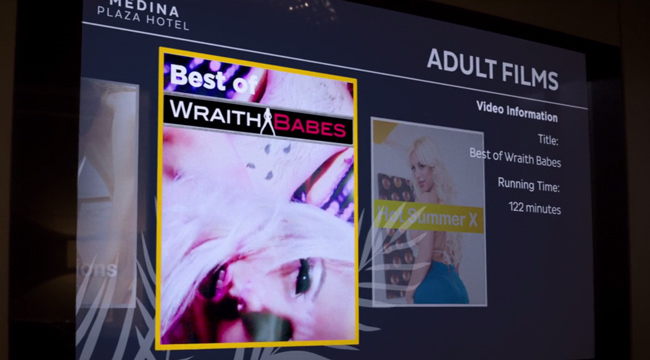
This episode has numerous references to “Fifteen Million Merits,” with the most obvious being the repeated use of Abi’s song “Anyone Who Knows What Love Is” being used to induce memories by insurance investigator Shazia. And when architect turned murderer Mia orders a porn in her hotel room, WraithBabes shows up as an option.
As if you’d forgotten that particularly stomach-turning moment in “Fifteen Million Merits,” Abi ends up making porn for WraithBabes after being rejected as a singer on the talent show Hot Shots. Speaking of Hot Shots, the hotel concierge mentions a scandal involving a judge from Hot Shots getting “caught with a rent boy” in a hotel room.
There’s also a pizza-related reference to “USS Callister”: Fences Pizza isn’t just the franchise that repeatedly interrupts the adventures of Captain Daly, it’s also responsible for the automated pizza delivery van central to the “Crocodile” plot. Fans trying to sort out a coherent timeline have sometimes assumed “U.S.S. Callister” must happen before “Crocodile” since Fences hasn’t replaced its delivery people yet, but maybe the lawsuit from “Crocodile” is why they’re back to hand delivering pizzas in “U.S.S. Callister.”
“Metalhead”
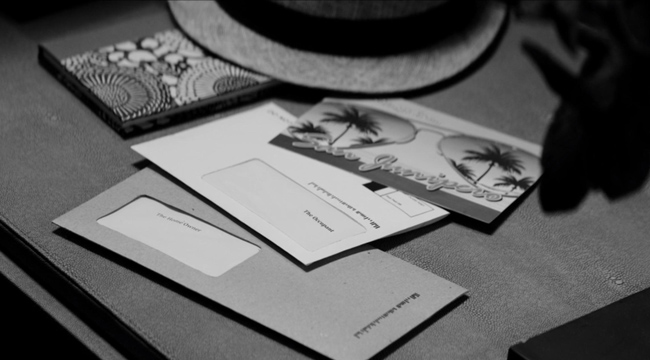
When Bella is searching through a desk, you can see a postcard from season three’s “San Junipero” sitting there. One creepy but kind of nice theory suggests all the deceased seniors “living” in San Junipero are capable of sending postcards to their loved ones in the real world. Or maybe these are advertisements? Either way, they appear more than once in the season. The same kind of postcard can be seen on the fridge in “Arkangel.” Was Sara’s mom considering sending grandpa to San Junipero, or is this a postcard from grandpa?
There’s one more connection to that episode in “Metalhead.” TCKR, the company responsible for the San Junipero Project, has its name show up on the side of a van.
“Black Museum”
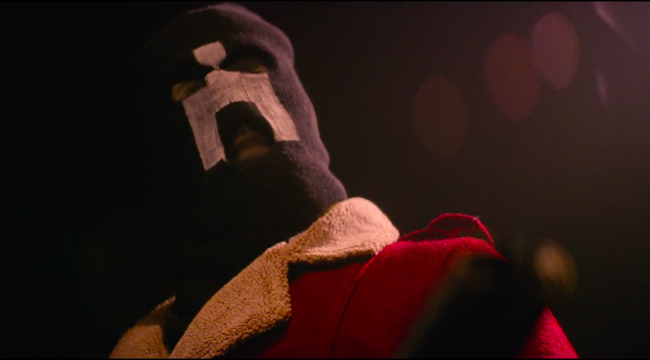
This episode is literally littered with references to past episodes. Exhibits in Rolo Haynes’s museum include pictures of guerrilla art activist Carlton Bloom, who got the Prime Minister to have sex with a pig in series premiere “The National Anthem.” A mannequin wearing the clothing of a hunter from “White Bear” stands next to video of child killer Victoria Skillane.
There’s a copy of the game Harlech Shadow from “Playtest” and one of the drone bees from “Hated In The Nation.” News footage includes headlines “Waldo Politician Makes Waves in Mexico” from “The Waldo Moment” and “Shou Saito Trial Continues” from “Playtest.” A video showing coverage of murdered weathergirl Denise Stockley’s death includes the sub-headlines “Arkangel system pulled from stores,” and “Autonomous military dog robot unveiled,” which references “Metalhead.”
Less-famous objects somehow made it into the collection, too. Daly’s DNA scanner from “U.S.S. Callister” complete with Tommy’s lollipop is there, along with the smashed tablet from “Arkangel.” Rolo has somehow even collected the bathtub from “Crocodile” complete with blood smears.
You can take many of those as winks to the audience than legitimate links to a larger Black Mirror universe, but then there’s Rolo Haynes’ past as an employee at TCKR and a hospital called St. Juniper, both references to “San Junipero.” When Rolo mentions the cookie technology from “White Christmas,” Nish asks if it’s “like when they upload old people to the cloud.”
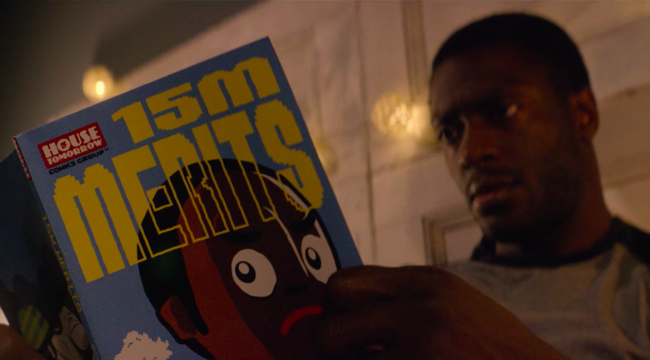
There’s also the interesting inclusion of a comic book titled 15 M Merits complete with a shot inside the book that depicts Bingham facing off against the judges of the reality show Hot Shots. That’s led some fans to think the episode “Fifteen Million Merits” never really happened but was just a graphic novel written as a critical satire of modern life. But that’s hotly contested by the faction of fans who believe the characters from “Fifteen Million Merits” are copies in a simulated world that are being jerked around for our entertainment on the TV show Hot Shots.
As you can see, there’s no shortage of references to a cohesive world and even more theories as to how they all comes together. It will be interesting to see whether Black Mirror continues to build upon the connected universe it’s created, or if the destruction of the Black Museum at the end of season 4 was a not so subtle indicator that the series plans to start fresh in (the as of now still unconfirmed) season five. Whatever the case, Black Mirror certainly gives one of the most disturbing takes on the fast approaching future, and the idea that all those nightmares can fit into one reality only makes it darker.
(This post wouldn’t be possible without the amazing crowd-sourcing abilities of the Black Mirror subreddit.)
